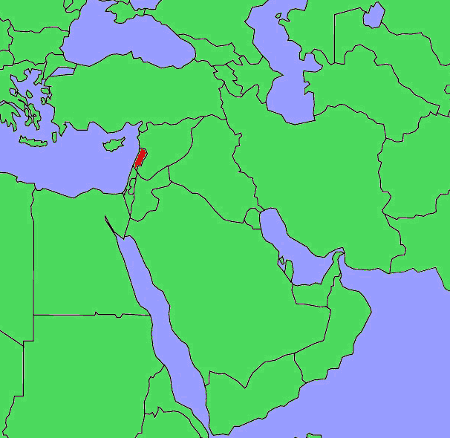
Circle the area on this map

C. Lebanon’s much larger Arab neighbor, Syria, has had a big impact on the nation. Syrian troops occupied much of Lebanon for 30 years, and later the Syrian civil war spilled over with warring sides fighting on Lebanese soil.
B. Israel invaded southern Lebanon in 1978 to stop attacks by Palestinian militants who had fled to Lebanon after they were kicked out of Jordan. The Israeli troops withdrew after the fighting, but maintained military control of a 12-mile-wide strip of Lebanon along the border.
A. About 33% of Lebanese citizens are Maronite Catholics; about 30% are Shia Muslims; another 30% are Sunni; and a little more than 5% follow the Druze religion. Lebanon’s constitution guaranteed members each of major sect roles in the government. But, the influx of Palestinian and, later, Syrian refugees helped increase the decades of sectarian tensions and violence, resulting in political and economic collapse.
D. Phoenicia was a maritime culture that flourished for more than a thousand years. Several city-states on the coast of what is now Lebanon grew rich trading cedar, wine, dye and other goods around the Mediterranean Sea. They established ports, warehouses, markets and colonies all across the Mediterranean and up to the southern Black Sea. Along with trade goods, the Phoenicians spread their alphabet to Europe, Anatolia and North Africa.